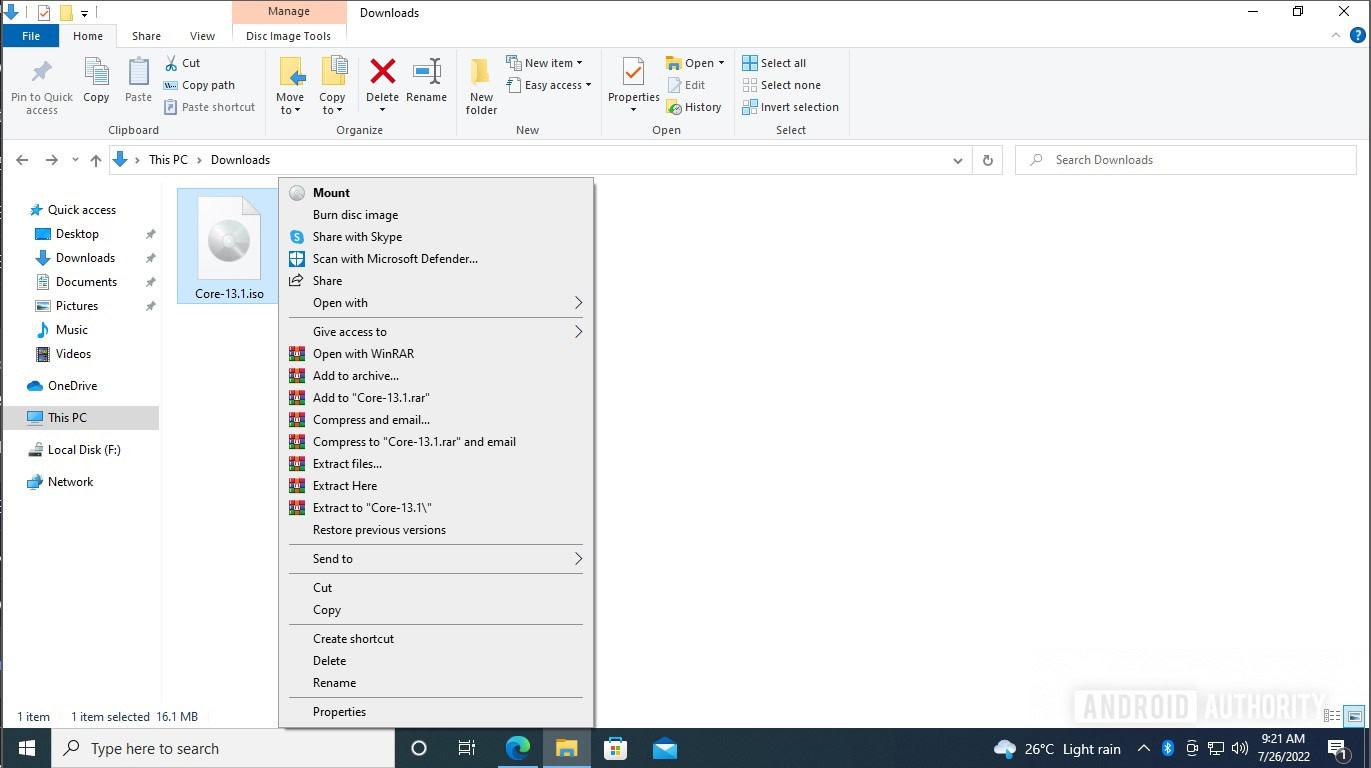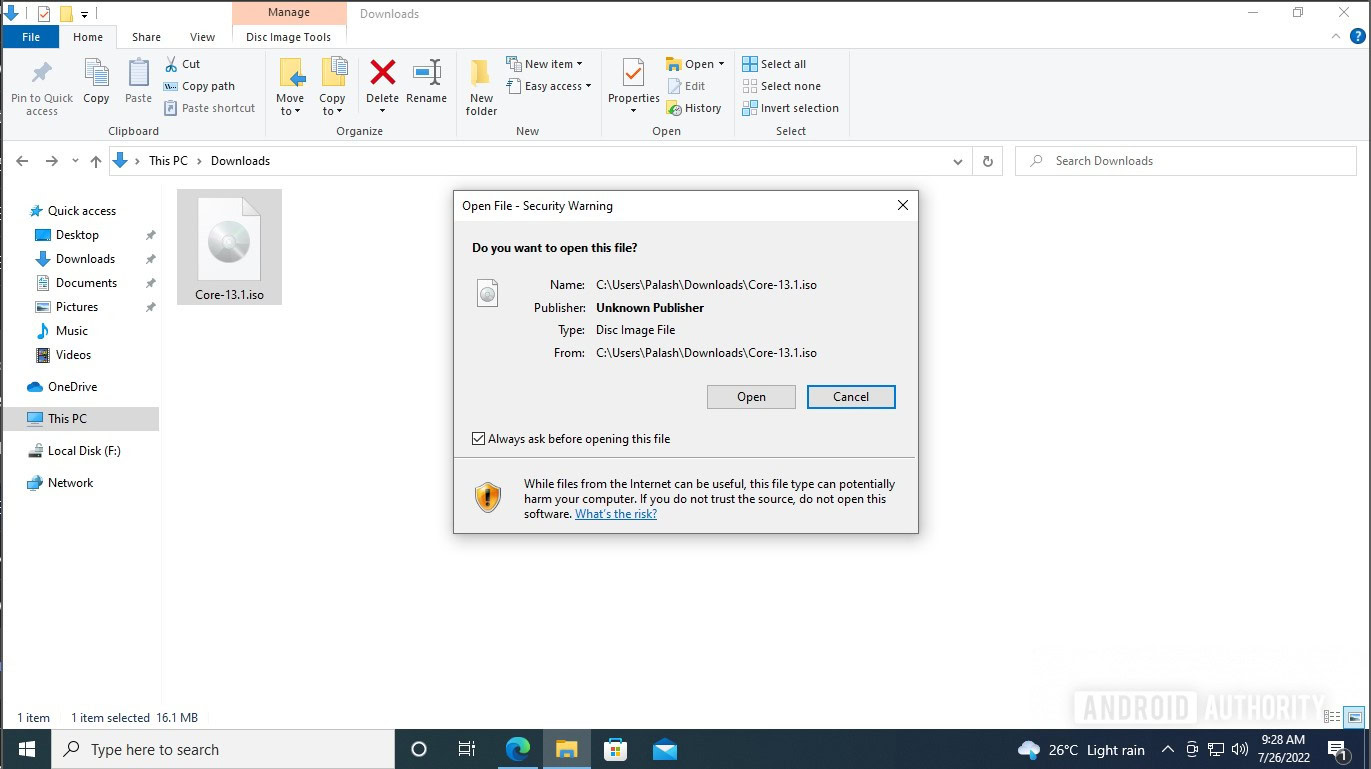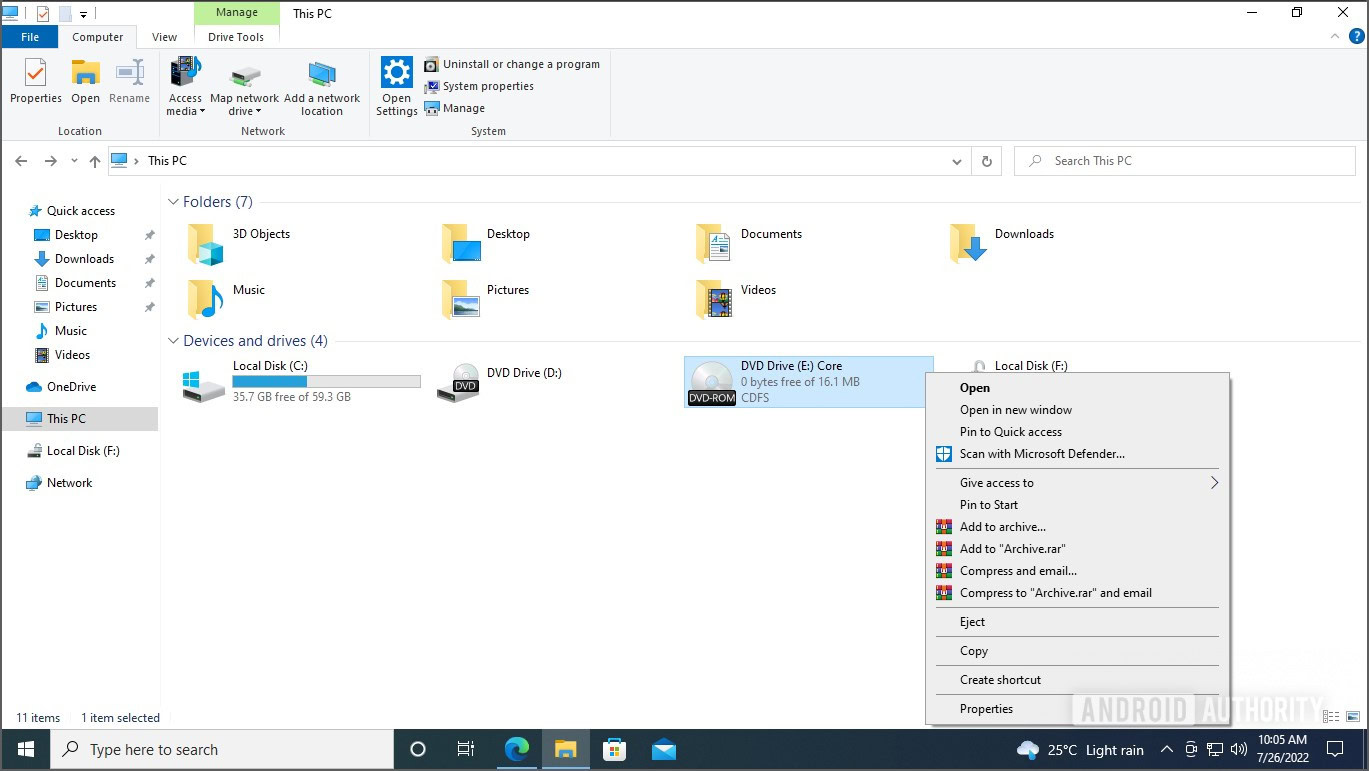Affiliate links on Android Authority may earn us a commission. Learn more.
How to mount ISO images in Windows
Published onMarch 16, 2023
ISO is a type of image file that is generally used for CD/DVD images. With optical media becoming less and less common, ISOs have become a nifty way of using virtual CD/DVD drives to do things that would require a physical optical drive, like installing operating systems. The great thing is that it’s quite easy to mount an ISO in Windows if you need to. Here’s how to mount an ISO file in Windows 10 and 11.
QUICK ANSWER
To mount an ISO in Windows 10 or 11, find it in File Explorer, right-click it, and click Mount.
To unmount an ISO, open File Explorer, find the virtual DVD Drive where the ISO is mounted, right-click it, and click Eject.
JUMP TO KEY SECTIONS
How to mount ISO in Windows
On older Windows releases, you would need specialized software to mount an ISO file. However, with Windows 8, Windows 10, and Windows 11, you no longer need any extra software. The OS includes ISO mounting functionality, so the process just takes a few clicks now. So now you can easily access the contents of the ISO file within seconds.

To mount an ISO in Windows 10 or 11, follow these steps.
- Open File Explorer.
- Navigate to the location where the ISO file is present.
- Right-click the ISO file.
- Click Mount.
- If a security warning pops up, click Open.

The mounted ISO will show up as a removable CD/DVD drive in File Explorer.
How to unmount ISO in Windows
Similar to how mounting was incorporated into the OS from Windows 8 onwards, unmounting has also been incorporated into the OS.

To unmount an ISO in Windows, follow these steps.
- Open File Explorer.
- Click This PC in the left navigation tab.
- In the right tab, find the DVD Drive where Windows has mounted the ISO, and right-click it.
- Click Eject.
The virtual DVD Drive where the ISO was mounted will disappear from File Explorer, confirming that the ISO was unmounted.
If you are installing Windows 11 on your computer, it would be worth taking a look at how to install Windows 11 on unsupported hardware, as there are a few nuances. If you are merely working your way around some hard drives, you should know how to clone a hard drive, how to encrypt a drive, or how to format and partition one. You never know when you’d need to do these steps, so it’s best to be prepared with general knowledge.
FAQs
Yes, in addition to mounting an ISO in Windows, you can also burn it to a physical disk by right-clicking it and clicking Burn disc image.
To mount an ISO file to a USB drive and create a bootable USB, you need specialized software like Rufus.